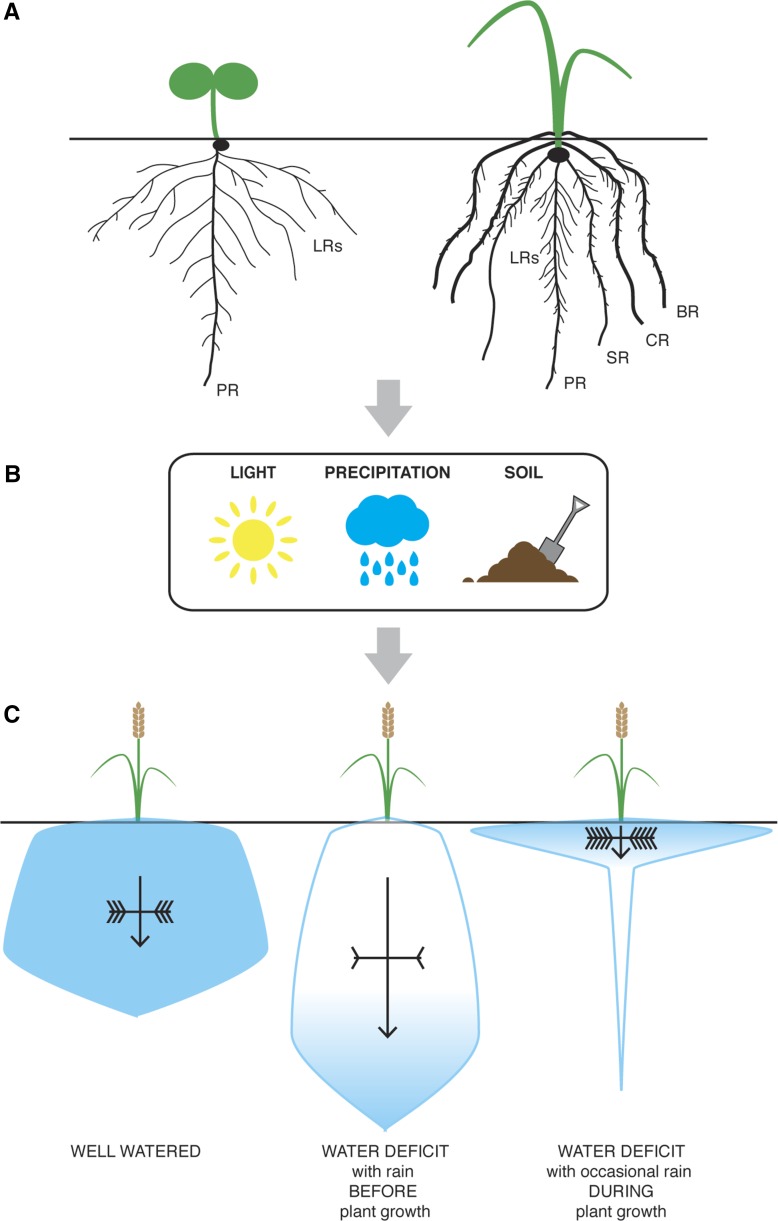Figure 3.
Changes in RSA upon Water-Deficit Stress.
(A) RSA of a taproot system (left) and a fibrous root system (right). Taproot systems consist of a PR and LRs. Fibrous root systems consist of embryonically derived primary and seminal roots (SR), postembryonic LRs, belowground crown roots (CR), and aboveground brace roots (BR).
(B) Different environmental factors such as light, precipitation, and soil influence RSA during plant development and growth.
(C) RSA ideotypes for well-watered and water-deficit conditions. Water is shown in blue and is equally distributed in the soil under well-watered conditions. If the primary water source is rainfall before the growing season, the “steep, deep, and cheap” ideotype ensures water uptake in deep soil strata. If occasional rainfall is the primary water source, water uptake is highest in upper soil strata.
Deep root growth correlates with arrow length and branching frequency with the number of inverted arrowheads.

